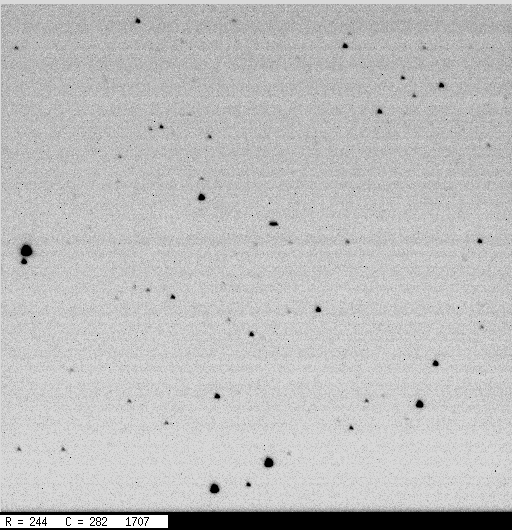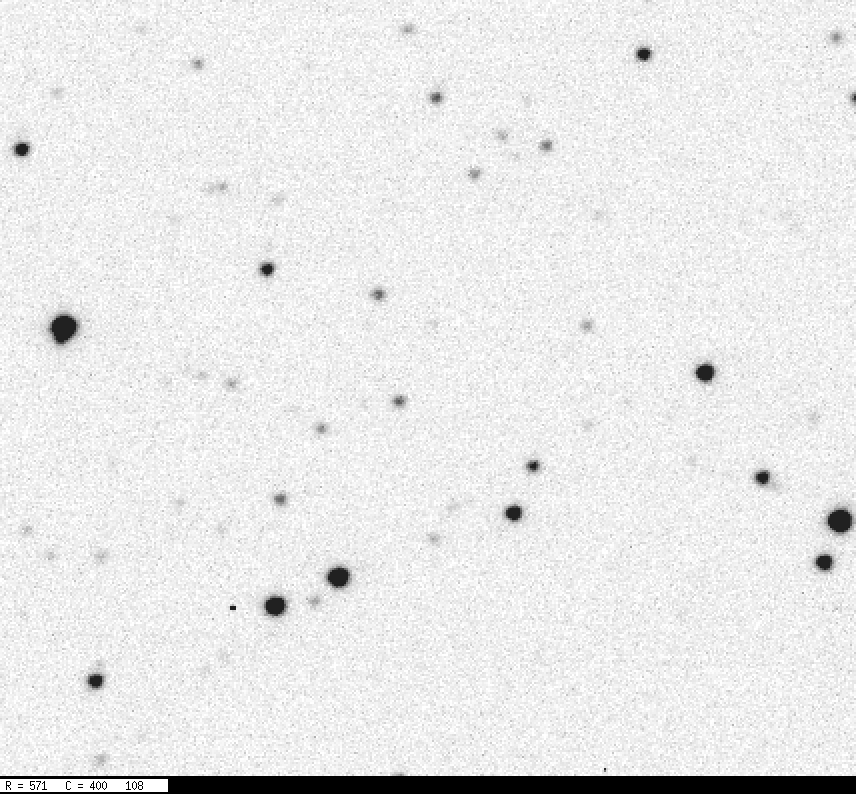
 Copyright © Michael Richmond.
This work is licensed under a Creative Commons License.
Copyright © Michael Richmond.
This work is licensed under a Creative Commons License.
| 2:35 PM Wednesday, March 16: fixed a typo in item 2 of the list at end. The year should be 2005, not 2004. MWR |
On UT March 4, 2005, astronomers at Yerkes Observatory (near Williams Bay, Wisconsin) and at Gettysburg College (in Gettysburg, Pennsylvania), observed the asteroid 1998WT simultaneously. Because they were looking from different locations on Earth, they saw the asteroid appear at slightly different places in the sky. If one can measure the difference in the asteroid's position, one can estimate the distance to the asteroid.
Your job today is to measure the (RA, Dec) position of the asteroid as seen from the two observatories. Below are closeups of the images obtained by each observatory at 02:45 UT March 4, 2005.
First, from Yerkes. It's easy to identify the asteroid in this picture, as it was moving so fast that it left a short streak.

Now, from Gettysburg (this is just a portion of the entire image, focusing on the asteroid). Because this image had a shorter exposure time, and because it has a slightly blurrier PSF, it isn't as easy to pick out the asteroid. Compare it to the image above, though, and you should find it.

You might want to print out copies of these images for reference ...
Now, to measure the position of the asteroid, I suggest that you use the Aladin tool.
 Copyright © Michael Richmond.
This work is licensed under a Creative Commons License.
Copyright © Michael Richmond.
This work is licensed under a Creative Commons License.